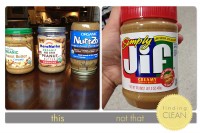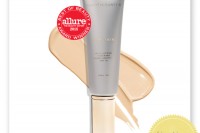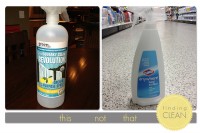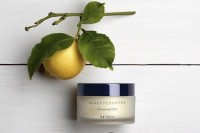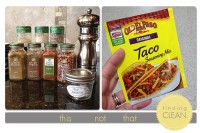First I want to express my belief that whole foods, mainly that do not come in a box, are the absolute BEST things we can eat. I try to buy very little processed, pre-packaged food. But, if I am going to buy processed food, at the very least, I prefer it to be organic. Just because something is organic does not mean it’s good for you.
I previously read this article by Robyn O’Brien on the Prevention Magazine blog. It really spoke to me because not that long ago, the only thing I bought organic on a consistent basis was milk. And by doing so, I somehow felt like I was protecting my kids from that nasty growth hormone (RBGH) we’ve all heard about. The problem was, the rest of the food I was buying was riddled with GMO’s, toxic pesticide, petroleum based preservatives, artificial color and sweeteners, and who knows what else.
Think about cheese for a minute (which my daughter can eat her weight in), it’s made from milk right? So, if I buy cheese that’s not organic, it most likely came from cows that were given RBGH, and that were treated with antibiotics, and were also fed GMO corn/grain (instead of grass), which has been sprayed with pesticide and put through an irradiation process with fillers, etc. That’s quite a backstory for a piece of cheese. And that’s just the “natural” cheese. Once you grab a box of Kraft Macaroni and Cheese, you’ll need to add all kinds of other things to the list (including yellow 5 and yellow 6).

As Robyn said in her article, “when I first heard the term “organic” several years ago, I dismissed it. It connoted a “status” and conjured up two different images: lifestyles of the rich and famous or perhaps some alternative, hippie thing.” This quote made me laugh because that’s exactly how I felt about organic food. And when trying to explain all of this stuff to my mother-in-law (she was here when I began this food journey), I felt a little like a “hippie.” But, what most people don’t realize, is that much of the synthetic ingredients (including GMO’s) were added to our food supply in the last couple decades. Our parents didn’t have to worry so much about it because it wasn’t so much of a problem.
“Don’t let the perfect be the enemy of the good.” Robyn O’Brien used that quote in her book The Unhealthy Truth so many times. It’s hard at first. I was literally in the grocery store with tears in my eyes as I realized that almost everything that I was eating and feeding my family was tainted by GMO’s (among other things). So, we get a little toxic stuff in our cereal, then a little in the milk, then a little in our fruit, then a little in our soup at lunch…. you see how it all adds up right? And so began my journey to eating cleaner, healthier food. That’s what I’m hoping to share on Finding Clean. The story behind HOW I did it, WHAT I buy (yes, I still buy cookies and soda), and WHERE I get information. If I can help even one person out there with getting started, then I’m a happy camper! 
So start small if you can. Use this list from EWG with the Dirty Dozen (dirtiest produce) and the Clean 15 (the cleanest produce) and buy organic when you can. I recently read an article that said Strawberries are sprayed with more than 200 pounds of pesticide per acre in California. The next highest is carrots, around 80 pounds per acre, just to give you a reference. I know that many grocery stores don’t have a great selection of organic produce, but it’s getting better. And, the more you buy, request, or demand these items, the more your favorite grocery stores will provide them. I buy all of my produce at Whole Foods, simply because the selection for organic is fantastic, and the prices are actually cheaper for organic produce there (vs Publix). It’s a hike for me to get to Whole Foods, about 25 minutes each way. But I want to vote with my money whenever I can.








